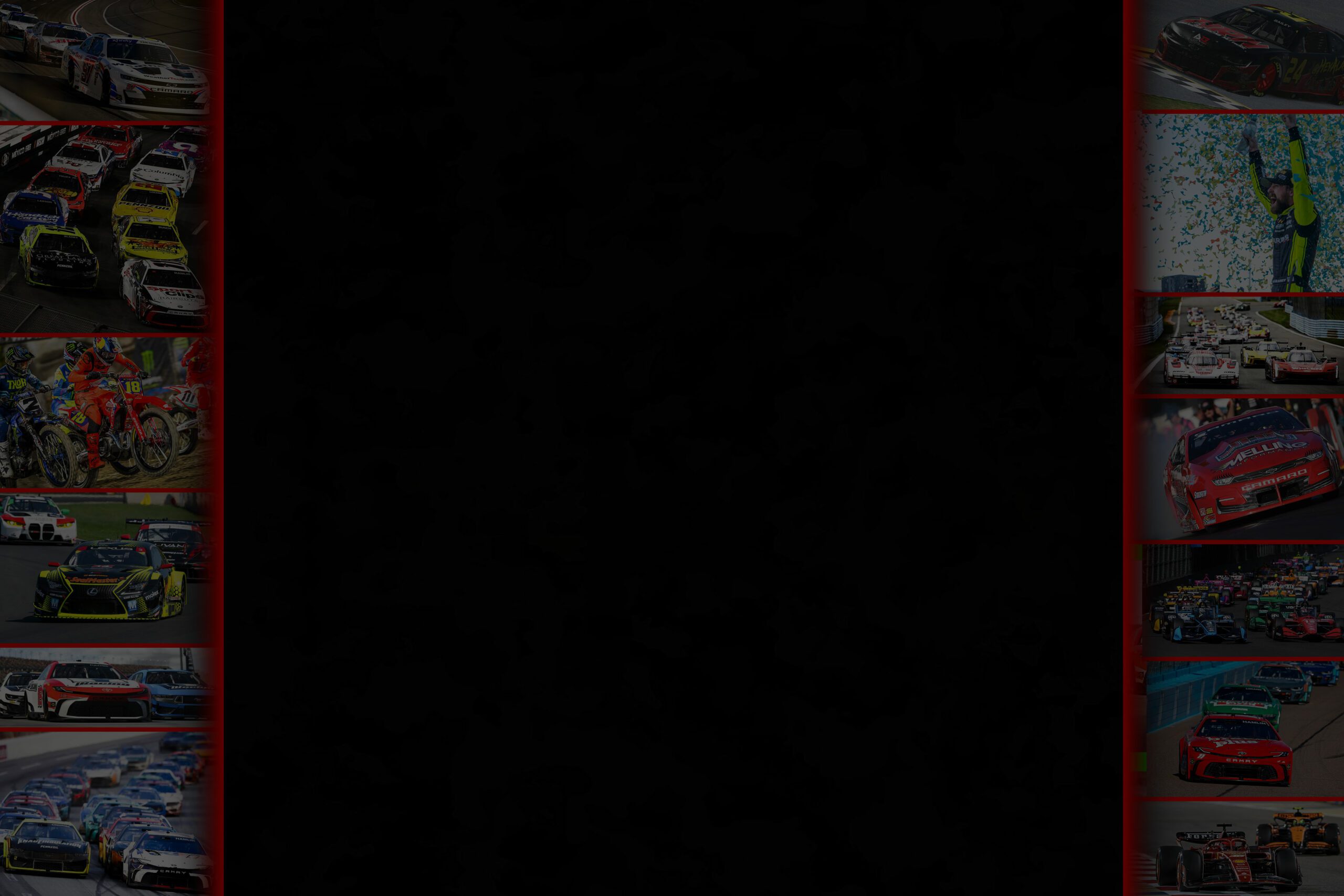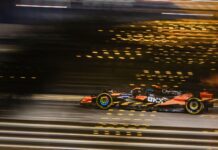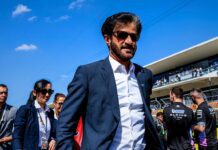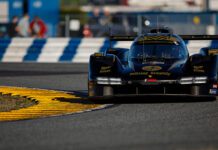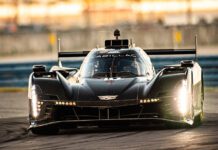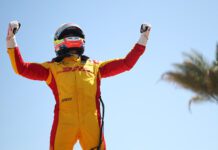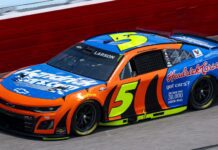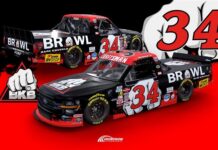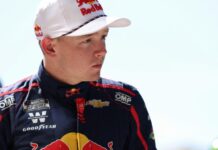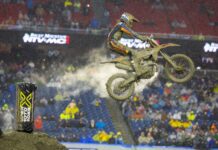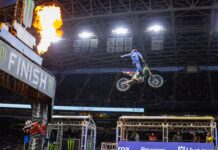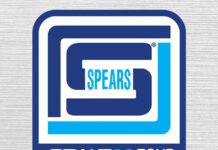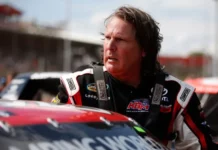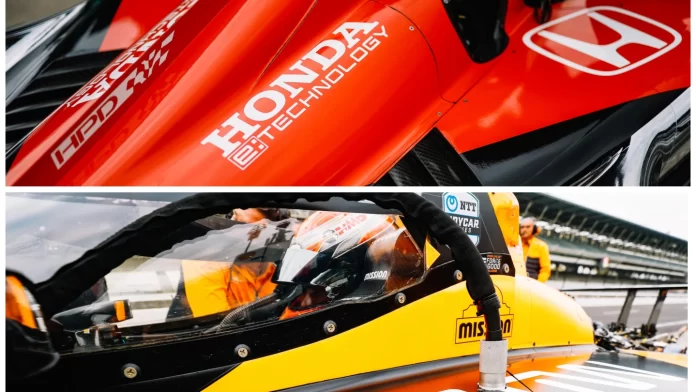IndyCar’s Hybrid Assist program either will make the engine formula more relevant to manufacturer needs or it could be an added expense that won’t yield the speed increase desired by many.
It all depends on who is doing the talking.
In theory, the hybrid assist unit stores up kinetic energy and releases it with an added boost of horsepower. There will indeed be more horsepower, but the added weight of the unit along with the weight of the aeroscreen may prohibit an increase in speed.
“No, it’s certainly not faster,” said Arrow McLaren driver Alexander Rossi, the winner of the 100th Indianapolis 500 in 2016. “I don’t think anything’s really optimized yet, so it’s hard to say.
“We’re still in a testing process where we are trying different things. The manufacturers want to try different strategies and different ways of doing this. I think that’s good.
“I have some experience from F1 when we introduced that. It was my first year in Formula 1 when they introduced the hybrid there. It reminds me a bit of those days where you sort of try different things. It’s a bit of an experiment.”
One driver stressed it’s more important to determine the reliability of the system instead of sheer speed at this stage of development.
But will it be faster?
“No, not this year,” two-time IndyCar Series champion and 2018 Indianapolis 500 winner Will Power said of Team Penske. “It’s got more capability, but I think reliability comes first.
“We’ll creep up on the amount of power that we use and deploy.”
When the hybrid assist unit was announced by IndyCar several years ago, it was designed to be paired with a beefed-up 2.4-liter, twin-turbocharged engine. It was hoped the additional size of the engine along with the boost from the hybrid assist would bring horsepower over 900.
But earlier this year, IndyCar, and its manufacturers – Chevrolet and Honda – announced the bigger engine would be “paused,” and the hybrid assist unit would be part of the current 2.2-liter engine.
IndyCar has been extensively testing the hybrid assist program since the latter part of the 2023 season. It has increased the testing since the season concluded Sept. 10 at the Firestone Grand Prix of Monterey at Laguna Seca.
There was one test at Sebring where Scott Dixon (in a Chip Ganassi Racing Honda) and Power (in a Team Penske Chevrolet) ran 1,000 miles.
Those tests were held in private as was a recent test at Barber Motorsports Park in Alabama.
But on Oct. 12-13 at Indianapolis Motor Speedway, a small contingent of media, including NBC Sports.com, were able to attend the test.
There were four teams that tested including Chevrolet drivers Power at Team Penske and Alexander Rossi and David Malukas splitting the testing duties at Arrow McLaren. Honda was represented by Colton Herta and Marcus Ericsson sharing the ride for Andretti Global. Two-time NTT IndyCar Series champion Alex Palou drove both days for Chip Ganassi Racing.
Each driver and manufacturer ran countless laps, came into pit lane, went over the data, returned to the track for another 10 laps, then returned to the pit lane.
Over and over.
That is the nature of testing, especially at a manufacturer test. Lap times are not made public, and team engineers meet with engineers from their respective engine supplier and with IndyCar.
One engineer confided to NBC Sports.com that he wished the test had remained closed to the media. When asked why, his response was, “We’re getting dangerously close to running out of time. We’ve got a long way to go before we can have enough to supply every car in the series by next March” when the 2024 season opens at St. Petersburg, Florida.
He paused, however, and said, “But, one way or another, we’ll get there.”
That is the nature of race engineering. Just as teams and drivers are racing against the clock and their competition on race weekends, engineers and manufacturers are racing to meet a deadline.
During the CART era of IndyCar racing, automotive manufacturers in the series talked of technology transfer from racing to the passenger car. They also would assign young and eager engineers to the racing program to test their ability to think under pressure and solve problems in a short period of time.
Once those engineers proved themselves, they would be transferred to the passenger car group.
Talk to any racing engineer, and they are obsessed with finding solutions while fearful they won’t develop them in time. Generally, though, they solve the problem and move on.
It was that way during the “Aero Kit” era of IndyCar from 2015-2017 and with the advent of the aeroscreen when many modifications were made to solve heat issues inside of the cockpit.
IndyCar owner Roger Penske knows about deadlines. As one of the great businessmen and industrialists in the United States, Penske knows how to approach and meet deadlines.
As a racer, he faced a challenging deadline in the 1993-94 offseason with the development of “The Beast.” It was the Mercedes-Benz 209 cubic-inch engine that blew away the field in the 1994 Indianapolis 500.
But when the month of May began in 1994, the engine had yet to complete a 500-mile test. As Al Unser, Jr., Emerson Fittipaldi, and Paul Tracy were at Indianapolis Motor Speedway for practice, a secret test team was at Michigan International Speedway testing the unproven engine.
One of the drivers would slip away and pound around the 2-mile MIS oval before “The Beast” was ready to attack.
Penske is confident both Chevrolet and Honda will meet the challenge on the hybrid assist project.
“We’ve been working on this for many, many months,” Penske told NBC Sports. “The cooperation between Chevrolet and Honda has been terrific. We are in the testing stage now, and we have run hundreds of miles through the system. We are getting the different teams to test it and get mileage from it. It’s going to be durability and the ability to build enough units by the time we start the season.
“Right now, we are on schedule. We have to meet certain gates and hurdles to get through.”
Penske is always up for the challenge. He expects the same from his businesses and race teams.
He believes the hybrid assist is important for IndyCar and for auto racing in general.
“The system is bringing us more technology,” Penske told NBC Sports. “To think we can generate, regenerate, and use the power three or four times during a lap that we haven’t thought about before, and you will have a paddle to be able to do that on the Speedway. There are lots of unique things. I think it will put a lot of interest into the series.
“Plus, we’ll be the real first racing series to have this kind of opportunity to use a hybrid racing system. I think thumbs are up, a lot of work to do, but we want to be there at the beginning of the season.”
From a team ownership side, Chip Ganassi is hoping his Cadillac team’s experience in IMSA (which introduced hybrid engines to its premier prototype category in 2023) will help with the hybrid development in IndyCar.
“We have a little bit of hybrid experience with the (IMSA) car, and I would say it’s probably paralleling that program,” Ganassi told NBC Sports. “You have a lot of teething issues. They are issues that you have one time, and it’s over with.
“You go through a lot of that any time you have some new component like that on the car. I think it will be ready for next year.
“We are all waiting in anticipation.”
IndyCar and its partners have come up with a paddle system to regenerate the unit on ovals. The energy is regenerated and stored by using the brakes on street and road courses, but brakes rarely are used on an oval.
On a superspeedway such as the 2.5-mile Indianapolis Motor Speedway, the intention is to avoid the brakes except on pit stops.
To meet that challenge, the driver can recharge the system by using a paddle on the steering wheel or a button.
“We had paddles on the car already,” Matt Niles, the Honda senior engineer and large projectlLeader in charge of the hybrid project, told NBC Sports. “Using that for regen seemed like the natural thing to do. We had to do some software trickery to reassign the clutch paddle for use while out on track.
“But it seems like it could work, and that’s what we’re trying to figure out here today and tomorrow is to get the drivers out there together and see if we could get it to work in a pack.”
Rob Buckner is the IndyCar program manager for Chevrolet and explained to NBC Sports why the paddle system was the best way to regenerate the system.
“When we were looking at how we could make this work at a superspeedway, the paddle was a fit for how the drivers could manage the energy in the system, out of the system,” Buckner said. “It kind of plays into the hands of the driver with how this place historically races. It seemed like a good starting point for the first couple of days here.
“I think we’re all learning a lot. There’s a lot of details to come on that, but all good so far.”
Two months into the hybrid assist testing, there remain challenges to solve, but it includes a unique concept of using super capacitors to store the energy instead of a battery.
That is different than hybrid storage systems used on passenger cars with batteries.
The super capacitors act as batteries. There is an electric motor that produces the power in concert with the internal combustion, fuel-powered engine.
The entire unit fits into the bell house of the car, the rear-end piece that fits between the engine and the gearbox.
“It’s got a lot of horsepower, low voltage,” IndyCar president Jay Frye said. “That was something that was important. How that works without batteries or cap backs. High horsepower, all this fits inside the bell housing.
“Obviously, the packaging on an Indy car has to be small. One of the biggest challenges is the packaging of it into this car.”
The energy storage and electric motor is tied into the drivetrain of the vehicle.
On an oval, the driver uses a paddle or a button to store energy and also add power to the car. The system can be used with either automatic regeneration or the driver pulling on the paddle.
“From our side, I think we’re just interested in getting involved in different, sustainable technologies out there,” Frye said. “We get a lot of our engineers to develop them and work on them, then come here to this sort of extreme environment to test them in a race, how that all plays out for the future.”
According to Niles, IndyCar and the two engine manufacturers are in agreement with the energy storage. The importance of testing is to learn if the components will survive the intense racing environment.
Vibration and high heat temperatures have created issues that the group has attempted to solve.
“I think going forward, a lot of it is really how we use the system and the parts and pieces we have, and how that’s regulated on track and how the drivers use it, how the engineers interface with it, how we go racing,” Niles said. “That’s where we’ve been going through sort of a street course at the short course at Sebring, we’ve been running short ovals, road courses, and now we’re here at this hallowed ground to see how it works here.
“We have to go back through all the data and start making some decisions on how we go to St. Pete.”
Over at Chevrolet, Buckner has called it a “massive learning curve every time they go testing.” They have discovered the system actually changes the balance of the car.
“The drivers have been enjoying having a different experience in the car beyond what a 2.2-liter package has always been engine-wise,” Buckner said.
The hybrid assist unit is a spec piece and has been a collaborative effort between Honda and Chevrolet rather than a proprietary project.
The proprietary needs come from getting even more performance out of the 2.2-liter engine that has been in IndyCar since 2012.
“We’re still trying to get more power, squeeze more that we can out of that every year,” Niles said. “It’s a new piece, a new bit of energy.
“So even though we kind of all have the same system, there is some differences in how you might use it, how a driver might interface with it. Our engineers are able to sort of dig into that and try to figure out the best way to go forward.
“Normally, we’re out here, it’s cutthroat, which we love competing out here. We’ve been able to wave the white flag and get this done, which has been really good.
“It’s been a great collaboration.”
According to Buckner, General Motors and Honda are developing fuel cells and electric vehicles together.
“This isn’t our only joint venture,” Buckner said. “We still compete in the showroom, compete on the racetrack, but this is a project that teaming up together has made a lot of sense. It helps the series that we’re competing in.
“It has been a good joint collaboration project.”
But does this project have any technology transfer that can be used in the automotive industry?
“I think we’re always trying to compare simulation tools and how we compare coming to the racetrack,” Buckner said. “I don’t know if capacitors would power an all-electric vehicle, which is where we see GM going simply because they’re kind of high power for a short duration, which isn’t a good fit for an all-electric vehicle in terms of range.
“I think the whole EV space, everyone is learning a lot.
“You don’t want to turn away from any opportunities to build upon that skill set for the company, for the program, for motorsports or anything.”
“I think to get all the teams to have their hands on it, our goal is to have that before the end of the year,” Niles said.
IndyCar will continue four-car testing for the next month or so. The next big test will be a 10-car test in early December with one car per team.
While some of the engineers and project leaders are trying to overcome challenges, Frye and IndyCar remain undeterred. They believe it will improve competition, even if it doesn’t necessarily create more speed.
“It’s going to give the drivers a new toy, a new tool,” Frye explained. “Some of them are going to like it probably more than others, it’s going to be interesting to see how it plays out.
“Remember, three or four years ago, we ran a push-to-pass test here, so we’ve done something similar to this. Never run anything like this on an oval before, or anywhere before, an oval for sure.
“It will be interesting to see how this afternoon plays out. Again, it’s a new tool.
“We got amazing drivers and amazing teams, competitors. They’ll figure it out.”
But the clock is ticking. Every day that goes by is one day closer to the start of the 2024 NTT IndyCar Series season on March 8, 2024.
“I think getting all the parts and pieces in place by St. Petersburg is going to be a challenge,” Niles said. “But that’s what we do here, is challenges.
“We’re going to keep pushing ahead and get it done.”
